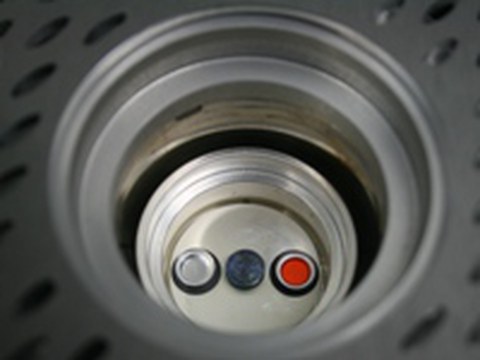thermal analysis
Fields of application
Thermal analysis is of great importance in the areas of material characterization and development, process development and optimization as well as quality control of macromolecular materials. Due to their chemical composition and their morphology, these often show a significant dependence of their properties on temperature, stress and time. The different methods of investigation allow statements regarding the properties of the material and its resistance. In addition, processes such as radical crosslinking can also be analyzed.
Thermal analysis is used in determining:
- the thermal stability and the volatilization of individual constituents
- of specific heat capacities
- of exo and endothermic reaction processes
- of morphological variables
- of the crosslinking degree
- of processing parameters, in particular in the case of thermal or optical curing processes
- of viscoelastic material properties
- of phase transitions such as the glass transition region
- thermal limits of usability.
Methods
Thermogravimetric analysis (TGA) is based on the measurement of the mass change of a sample under controlled ambient conditions as a function of temperature and time. Physical and chemical changes such as, for example, drying, sublimation and evaporation of the sample, as well as decomposition and pyrolysis can be detected and investigated under exclusion of oxygen. In addition, the reaction with the surrounding atmosphere, for example for the investigation of the oxidation stability, can also be measured by measurement technology. The results allow conclusions to be drawn about the specific thermal behavior and thermal stability of the sample as well as statements on volatile constituents.
Dynamic Differential Calorimetry (DSC) is an analysis method for determining characteristic temperatures and calorific values such as the specific heat capacity. The measurement is based on the detection of the heat flow of the sample compared to a reference sample. The results allow conclusions about morphological parameters such as crystallinity or the detection of annealing and curing processes. In addition to the pure heat capacity, phase transitions as well as exo or endothermic reaction processes can be detected since the change in the process-induced thermal energy is detected by the heat flow measurement. The temperature-modulated DSC is a further development. The underlying linear heating rate is superimposed by a sinusoidal temperature modulation.
Dynamic mechanical analysis (DMA) is mainly used to determine viscoelastic material properties. In the measurement, the sample to be examined is subjected to a sinusoidal mechanical stress as well as to a temperature program. The material also responds sinusoidally in the same period with a deformation or elongation. The amplitudes of the force and the deformation are measured as well as the phase shift between force and deformation. The DMA is particularly suitable for the determination of the glass transition since, in contrast to other thermal analysis methods, it is significantly more sensitive. The DMA provides data on temperature application limits, stiffness and damping, flow and relaxation behavior, structure and structure, aging, curing and vulcanization, and is thus an effective tool in research and development. It is also used for quality control, quality assurance and damage analysis.


